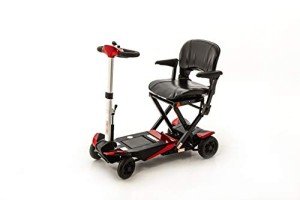Understanding Mobility Devices: Enhancing Independence and Quality of Life
In today's hectic world, the desire for mobility is universal. Nevertheless, Michiko Gerton or age-related obstacles can hinder motion, leading to an ongoing look for assistance. Mobility devices serve as essential tools to improve self-reliance, improve quality of life, and allow individuals to engage totally in their neighborhoods. This short article supplies a comprehensive introduction of mobility devices, including their types, functions, choice requirements, and more.
Types of Mobility Devices
Mobility devices range from simple aids to complicated equipment, tailored to fulfill various needs. Below is a table summarizing common kinds of mobility devices:
| Type of Device | Description | Perfect For |
|---|---|---|
| Walkers | Four-legged assistance devices that offer remarkable stability while strolling. | People requiring additional support. |
| Canes | Single or three-legged sticks that improve balance and support walking. | Those with minor mobility problems. |
| Wheelchairs | Seats mounted on wheels, available in handbook and electric variations. | People with restricted or no mobility. |
| Scooters | Electric lorries developed for outside usage and ease of navigation. | Those who can't walk fars away. |
| Crutches | Devices that help individuals transfer weight away from an injured leg. | Individuals recuperating from leg injuries. |
| Rollators | Walkers with wheels, seats, and brakes for improved mobility. | Users needing rest options while walking. |
| Lift Chairs | Reclining chairs that help users in standing and taking a seat. | Seniors or those with mobility restrictions. |
| Mobility Scooters | Small electric cars for limited mobility, frequently utilized outdoors. | Individuals needing help over fars away. |
Key Features of Mobility Devices
When picking a mobility device, numerous key functions need to be thought about to make sure ideal functionality and ease of use:
- Weight Capacity: Understanding the device's weight constraint is essential for safety and efficiency.
- Adjustability: Devices should be adjustable in height and width to fit the user easily.
- Portability: Lightweight and foldable choices are essential for users who travel or need transport.
- Stability and Safety: Look for features like anti-tip wheels and strong structures to improve safety.
- Relieve of Use: Simple mechanisms and user-friendly styles can make a substantial difference in everyday usage.
- Comfort: Ergonomic designs and cushioned seats can improve the user experience.
Choosing the Right Mobility Device
Picking the ideal mobility device can be a difficult job. Here are some actions to assist the decision-making process:
- Assess Needs: Evaluate the individual's mobility obstacles and daily activities.
- Seek advice from a Professional: Engage healthcare specialists who can offer suggestions based on the individual's physical condition.
- Trial Options: If possible, trial different devices to determine convenience and performance.
- Review Budget: Consider the cost of the device, including any additional functions or modifications required.
- Research Options: Determine the very best brand names and models by reading reviews and comparisons.
Table: Comparative Analysis of Popular Mobility Devices
| Gadget | Advantages | Downsides |
|---|---|---|
| Walkers | Outstanding stability, promotes walking. | Bulky, may restrict movement in small areas. |
| Canes | Lightweight, boosts balance. | May not supply sufficient support for extreme mobility issues. |
| Wheelchairs | Ideal for those with significant mobility restrictions. | Can be cumbersome, particularly in indoor environments. |
| Scooters | Great for outdoor usage, easy to maneuver. | Limited indoor functionality, much heavier. |
| Rollators | Supplies rest alternative, easy to move. | May require more area than conventional walkers. |
| Lift Chairs | Comfy, assists shift from sitting to standing. | More costly, bigger footprint. |
Frequently Asked Questions (FAQs)
1. What is a mobility device?
A mobility gadget is any tool created to assist people in moving and navigating their environment. This includes walkers, wheelchairs, scooters, and crutches.
2. How do I know which mobility device is best for me?
Consider your specific mobility challenges, physical capabilities, and way of life needs. Consulting with healthcare experts can likewise supply customized suggestions.
3. Are mobility devices covered by insurance?
Many insurance plans, consisting of Medicare, may cover certain mobility devices. It's essential to contact your insurance provider for particular protection information.
4. Can I lease a mobility gadget rather of purchasing one?
Yes, many medical supply stores and drug stores provide rentals for mobility devices. This alternative is useful for people with short-term mobility concerns.
5. How can I keep my mobility gadget?
Regular maintenance is important. It consists of cleaning up the gadget, examining for wear and tear, and making sure all parts are functioning correctly.
The Impact of Mobility Devices on Quality of Life
Mobility devices significantly enhance the quality of life for people with minimal mobility. They cultivate independence, encourage social interaction, and improve access to necessary services and recreational activities.
- Increased Independence: Users can navigate their communities, participate in occasions, and engage in pastimes without counting on others.
- Social Engagement: Mobility devices assist in involvement in social events, therefore combating sensations of isolation.
- Improved Safety: Devices offer stability and lower the threat of falls, promoting user confidence.
Mobility devices are more than simply tools for motion; they are gateways to self-reliance and quality living. By understanding the different kinds of mobility aids available, their key functions, and factors to consider for picking the best device, people can make educated choices about their mobility needs. Eventually, the ideal mobility device can cause a more active, fulfilling life. Whether it's a walker, wheelchair, or scooter, the ideal option contributes significantly to improving the mobility and independence of users.

